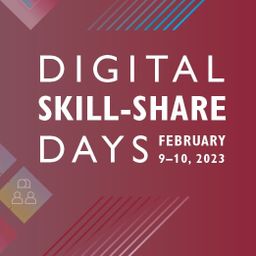
Maria Safos
Sessions in which Maria Safos attends
Thursday 9 February, 2023
One of the greatest challenges with developing digital skills is figuring out what you need to learn and to what extent. This session provides a framework for guiding you through both challenges. Specifically, by the end of this session, you should be able to (1) use a search strategy that identifies the types of ...
In this dynamic digitalized world, it is pretty essential to understand and properly address our "digital identities". Better awareness of that may help us to take better decisions on privacy and security.For example, in recent times at Concordia community, we have often been impacted by scam attempts through e-mails or other ways. While systems and policies are always trying to protect us from such risks, our awareness can saf...
This session will introduce participants to online platforms used to provide access to RMA digital resources. During the session, participants will become familiar with searching for digital archives across the following platforms: AtoM, Internet Archive, and Archive-It. The proposed session will include short live demos to demonstrate search and browse functionality. It is hoped this session w...
Friday 10 February, 2023
Learn how to use Power BI to create analytical visualizations and dashboards based on data in the Institutional Data Space (IDS). An introduction to Power BI will be provided and the steps to build a simple visualization using SIS source data will be demonstrated. No experience in Power BI is required.
Data analytics is the process of examining data sets in order to find trends and draw conclusions about the information they contain. It has become the most important tool in any auditor’s tool box. In the past, audits were done with the use of statistical sample, today, we are able to examine full population data and identify anomalies in a matter of minutes.In the session, I will provide 3 ex...




